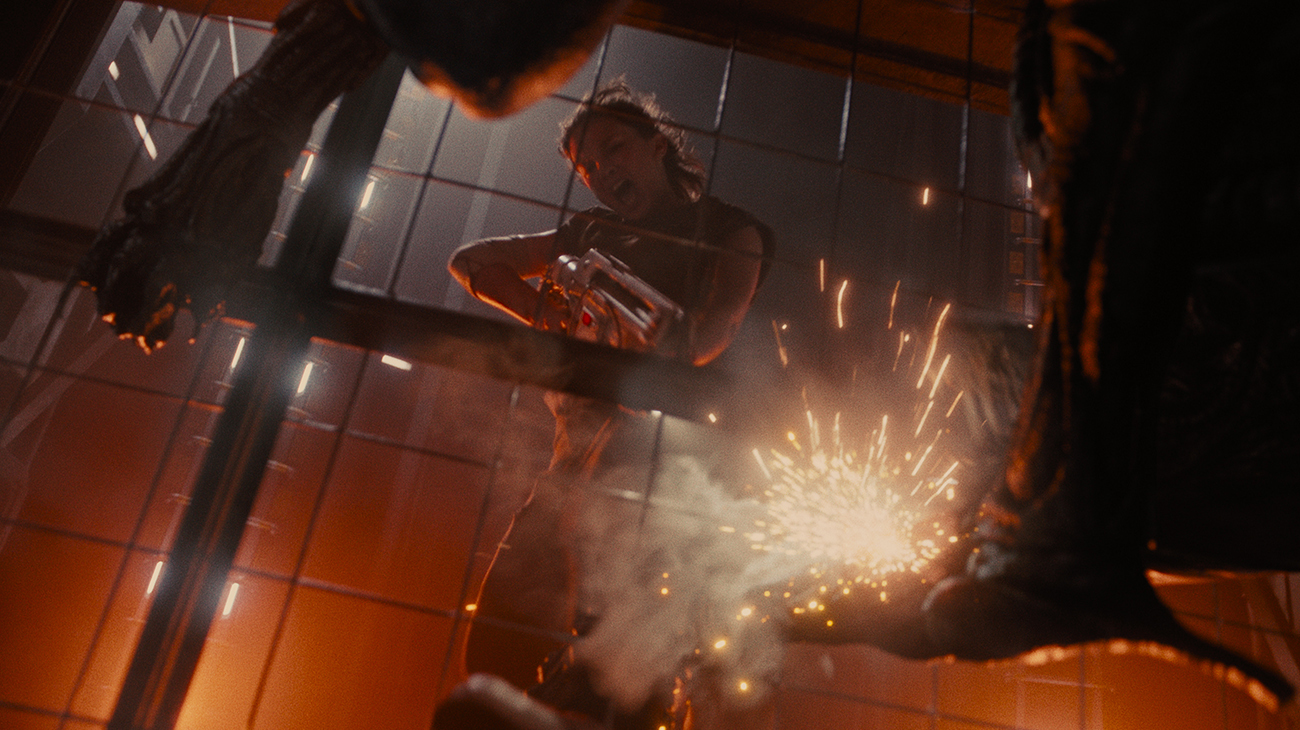Alien: Romulus is an imperfect organism composed of the best elements of the franchise
Ask five different Alien fans what their favorite films in the franchise are and why they love them so much, and you’re likely to get five different answers. Still, it stands to reason that each subsequent installment in the series will be measured by its similarity to one of two films: Ridley Scott’s 1979 original and James Cameron’s 1986 sequel. AliensIn . Alien: Romulusthe latest installment in the series, written by writer-director Fede Álvarez and regular co-writer Rodo Sayagues (Don’t breathe) wear their love for Scott and Cameron’s films with as much pride as fans of the franchise, to the detriment of the film’s visual merits and story.
The story takes place 20 years after the events of StrangerÁlvarez’s film revolves around Rain Carradine (Civil war‘s Cailee Spaeny), an orphan living on Jackson’s Star, a mining colony light years from Earth that’s shrouded in an endless dark storm. Her mother and father are dead; her only companion is Andy (David Jonsson), a malfunctioning synthetic android she cares for as a surrogate brother. Desperate to escape the colony—and the clutches of the Weyland-Yutani Corporation, the true central villain of the Alien franchise—Rain agrees to join a group of friends as they break into an abandoned station that’s drifted into their planet’s orbit. What they find aboard isn’t salvation, but a threat beyond their wildest dreams.
“Is it as good as Stranger or Aliens?” is the obvious question fans of the franchise will ask themselves when considering whether to see the film. Alien: Romulus. Álvarez and Sayagues seem to have uncomfortably realized that this question was coming. They anticipated those five different answers about what Alien fans like in the previous films, and tried to split the difference between all of those answers and more. Just like the stations Romulus and Remus, which serve as the film’s setting, Alien: Romulus consists roughly of two parts: a haunted house story in space à la Strangerand a horror action spectacle that appeals to audiences, such as AliensThe first element in this case is stronger than the latter, and the imbalance is one of the reasons Alien: Romulus feels more like a rehash of the franchise that defines it than the breath of fresh air it so desperately needs.
There are also positive aspects to this film: Alien: Romulus‘The set and production design easily place it in the category of the most visually impressive science fiction films released this year, with the cassette futurism and tactility of Scott’s original film, while introducing “new” technology that still feels appropriate for the setting. Benjamin Wallfisch’s score is another highlight, which includes Jerry Goldsmith’s iconic orchestral score from Stranger while when things really get out of hand, discordant, abrasive tones of industrial noise are introduced.
Spaeny and Jonsson undeniably deliver the strongest performances in the film’s ensemble. Rain is clearly coded as Alien: Romulus‘ answer to Ellen Ripley, though she’s far from a carbon copy of Sigourney Weaver’s character. Rain isn’t a hardened space truck driver with an all-or-nothing genius for survivalism; she’s a frightened young woman trying to escape the crushing weight of corporate debt.
When her love for Andy is confronted with her chance to leave Jackson’s Star, she must weigh the consequences of that fateful decision, along with the moment-to-moment choices that mean the difference between her survival and certain death. She tries to make the best of a shitty situation that only gets worse as more and more of her friends die. And the only way out of hell is to go through it and come out the other side.
Jonsson’s turn as Andy is one of the most moving performances in the entire film. Andy is not Alien: Romulus‘ answer to Ash, the first Stranger‘s android science officer turned antagonist. He looks more like a mirror reflection of Michael Fassbender’s David from Prometheus And Alien: Covenantif anyone had ever bothered to teach him love — or somethingapart from his respect for his creator and the goals of Weyland-Yutani.
Just as Rain must decide whether to leave without Andy, he is faced with the choice of abandoning Rain and her friends in the service of the corporation’s interests in the Xenomorph, or fighting for their survival, knowing full well that they may not do the same for him. The answer he arrives at, while predictable, speaks volumes about his resolve and strength of character in the face of both overwhelming terror and the internal moral battle raging between his better angels and his corporation’s programming.
How do you make the Xenomorph scary again after so many movie outings, all of which copy the original two films? In the case of Alien: Romulusthe answer is simple: you don’t. Álvarez never quite succeeds in making the franchise-defining aliens feel threatening in a way that moviegoers haven’t seen in the last 40 years. Despite some cross-species evolutionary chicanery in the film’s final act, Alien: Romulus never comes up with its own answer as to why audiences should fear this incarnation of the creature, unlike previous iterations of the franchise. Some inventive sequences make amusing use of Xenomorphs, including a striking zero-gravity scene. But this isn’t a film that depicts the franchise’s most iconic monster as a singular, inscrutable, acid-spitting apex predator – it’s simply a swarm of Colonial Marine gunfodder.
For those who are concerned that Alien: Romulus could turn around the psychosexual imagery the early parts of the franchise were known for, don’t worry; it’s here, albeit to a limited extent. We literally see a character insert an electric stun rod into an unambiguously vaginal cocoon before coming face to face with what can only be described as a clitoral claw. Later, as acid seeps from the mouth of a cocoon onto the writhing body of a victim, a Xenomorph awakens from its pregnancy, peeling away its amniotic armor as a stiff penis protrudes from the folds of its foreskin. Don’t look at me like that: this is another movie derived from HR Gigerfinally.
Fede Álvarez and co. have merged DNA from the original StrangerCameron’s sequels and Scott’s more recent prequels to see if anything new can be born of them — but they introduce no new genetic material of their own. The result is a technically impressive but narratively routine horror thriller that takes every opportunity to emulate its predecessors, while strangely contributing little to that legacy itself. That’s fine if you want to relive some of your old favorite jump scares with a fresh coat of paint. But for everyone else, Alien: Romulus is a serviceable but disappointing entry in a franchise otherwise known for its relentless evolution.
Alien: Romulus will be released in theaters on August 16.


